Casio WVA470DJ-1A Handleiding
Bekijk gratis de handleiding van Casio WVA470DJ-1A (6 pagina’s), behorend tot de categorie Horloge. Deze gids werd als nuttig beoordeeld door 55 mensen en kreeg gemiddeld 4.5 sterren uit 28 reviews. Heb je een vraag over Casio WVA470DJ-1A of wil je andere gebruikers van dit product iets vragen? Stel een vraag
Pagina 1/6

Operation Guide 3311 5052
1
MO0806-EA
Getting Acquainted
Congratulations upon your selection of this CASIO watch. To get the most out of your
purchase, be sure to carefully read this manual and keep it on hand for later reference
when necessary.
••••
•This watch does not have a time zone that corresponds to the Greenwich
Mean Time differential of –3.5 hours. Because of this, the radio-controlled
timekeeping and World Time functions will not display the correct time for
Newfoundland, Canada.
Keep the watch exposed to bright light
The electricity generated by the solar cell of the watch is
stored by a built-in battery. Leaving or using the watch
where it is not exposed to light causes the battery to run
down. Make sure the watch is exposed to light as much as
possible.
•
When you are not wearing the watch on your wrist,
position the face so it is pointed at a source of bright light.
•You should try to keep the watch outside of your sleeve
as much as possible. Charging is reduced significantly if
the face is only partially covered.
l
l
l
l
l
l
l
l
l
l
l
Bright Light
Solar cell
•The watch continues to operate, even when it is not exposed to light. Leaving the
watch in the dark can cause the battery to run down, which will result in some watch
functions to be disabled. If the battery goes dead, you will have to re-configure watch
settings after recharging. To ensure normal watch operation, be sure to keep it
exposed to light as much as possible.
All
functions
enabled
LEVEL 1
LEVEL 2
LEVEL 3
LEVEL 4
Charge
Rechargeable battery
Bright Light
Electrical
energy
Solar cell
(Converts light to
electrical power.)
LEVEL 1
LEVEL 2
LEVEL 3
LEVEL 4
Some or all
functions
disabled
Dis-
charge
Battery charges in the light. Battery discharges in the dark.
•The actual level at which some functions are disabled depends on the watch model.
•Frequent display illumination can run down the battery quickly and require charging.
The following guidelines give an idea of the charging time required to recover from a
single illumination operation.
Approximately 5 minutes exposure to bright sunlight coming in through a window
Approximately 50 minutes exposure to indoor fluorescent lighting
•Be sure to read “Power Supply” for important information you need to know
when exposing the watch to bright light.
If the digital display of the watch is blank...
If the Power Saving indicator (
PS
) is flashing on the display,
it means that the display is blank because the watch’s
Power Saving function has turned it off to conserve power.
Power Saving automatically turns off the display and
enters a sleep state whenever your watch is left for a
certain period in an area where it is dark. If the watch is
kept in the dark for a longer period, the analog hands will
also stop moving after a few days.
•The initial factory default setting is Power Saving on.
•The watch will recover from the sleep state if you move it
to a well-lit area or if you press any button.
•See “Power Saving Function” for more information.
About This Manual
•The operational procedures for Modules 3311 and 5052
are identical. All of the illustrations in this manual show
Module 3311.
•Button operations are indicated using the letters shown
in the illustration.
•Each section of this manual provides you with the
information you need to perform operations in each
mode. Further details and technical information can be
found in the “Reference” section.
Module 3311
Module 5052
General Guide
•Press C to change from mode to mode.
•In any mode, press to illuminate the display.B
▲
▲
▲
Battery Level Indicator
Alarm ModeStopwatch Mode
▲
Timekeeping Mode
Press C.
▲
▲
World Time Mode
Hand Setting Mode
or
Radio-controlled Atomic Timekeeping
This watch receives a time calibration signal and updates
its time setting accordingly. The time calibration signal
includes both Standard Time and Daylight Saving Time
(summer time) data.
•This watch is designed to pick up the time calibration
signal transmitted in the United States (Fort Collins,
Colorado) and the time calibration signals transmitted in
Japan.
•The U.S. time calibration signal can be picked up by the
watch while in North America.*
*The term “North America” in this manual refers to the
area that consists of Canada, the continental United
States, and Mexico.
Day
Day of week
Minute hand
Hour hand
Second hand
Current Time Setting
This watch automatically adjusts its time setting in accordance with a time calibration
signal. You can also perform a manual procedure to set the time and date, when
necessary.
•The first thing you should do after purchasing this watch is to set your Home City,
which is the city where you will normally use the watch. For more information, see
“To set your Home City” below.
•When using the watch outside the ranges of the U.S. and Japanese time signal
transmitters, you have to adjust the current time setting manually as required. See
“Timekeeping” for more information about manual time setting.
•The analog time of this watch is synchronized with the digital time. Because of this,
the analog time setting is automatically adjusted whenever you change the digital
setting. See “Analog Timekeeping” for more information.
To set your Home City
1. In the Timekeeping Mode, hold down A until the
transmitter indicator (US) starts to flash, which
indicates the setting screen.
•The second hand will move at high speed to the 12
o’clock position, where it will stop.
2. Press C once so the city code is flashing on the display.
3. Use (east) and (west) to scroll through the cityD B
codes until the one you want to use as your Home City
is displayed.
l
l
l
l
l
l
l
l
l
l
l
l
l
l
l
l
l
l
l
l
l
l
l
l
l
l
l
l
l
l
l
l
l
l
l
l
l
l
l
l
l
l
l
l
l
l
l
l
l
l
l
l
l
l
l
l
l
l
l
l
l
l
l
l
l
l
l
l
l
l
l
l
l
l
l
l
l
l
l
l
l
l
l
l
l
l
l
l
l
l
Transmitter indicator
TYO: All cities in Japan
SEL: Seoul
HKG: Hong Kong
•Note that this watch does not have a city code that corresponds to Newfoundland.
4. Press A twice to exit the setting screen.
•The first press of A displays the 12/24-hour setting screen. Pressing again exitsA
the setting screen.
•The second hand will advance at high speed to the correct position in accordance
with seconds count of the digital time, and resume normal movement from there.
•Normally, your watch should show the correct time as soon as you select your Home
City Code. If it does not, it should adjust automatically after the next auto receive (in
the middle of the night). You can also perform manual receive or you can set the time
manually.
•If you are in an area that does not use Daylight Saving Time (summer time), turn off
the DST setting.
To display the digital time and last signal screen
•In the Timekeeping Mode, press to cycle through the digital time screens asA
shown below.
•In the Timekeeping Mode, press to display the last signal screen. The last signalD
screen shows the date and time of the last successful time calibration signal
reception.
Last Signal Screen
Reception date
Press .A
▲
▲
Receiving indicator
A
2 seconds
A
Press D.
Hour : Minutes
PM indicator
Date Screen Receiving Indicator
and Seconds Count
Current Time Screen
▲
▲
Seconds
Reception Time
2 seconds
2 seconds
▲
Day
Day of week
HNL : Honolulu
ANC : Anchorage
LAX : Los Angeles, San Francisco, Las Vegas, Seattle, Vancouver, Tijuana
DEN : Denver, El Paso, Edmonton, Culiacan
CHI : Chicago, Houston, Dallas/Fort Worth, New Orleans, Winnipeg, Mexico City
NYC : New York, Detroit, Miami, Boston, Montreal

Operation Guide 3311 5052
2
Time Calibration Signal Reception
There are two different methods you can use to receive the time calibration signal:
auto receive and manual receive.
•Auto Receive
With auto receive, the watch automatically picks up the time calibration signal five
times a day at 0:00 a.m., 1:00 a.m., 2:00 a.m., 3:00 a.m., and 4:00 a.m. For more
information, see “About Auto Receive”.
•Manual Receive
Manual receive lets you start time calibration signal reception with the press of a
button. For more information, see “To perform manual receive”.
Important!
•When getting ready to receive the time calibration signal, position the watch as
shown in the nearby illustration, with its 12 o’clock side facing towards a window.
This watch is designed to receive a time calibration signal late at night. Because of
this, you should place the watch near a window as shown in the illustration when you
take it off at night. Make sure there are no metal objects nearby.
Resin Band Metal Band
•Make sure the watch is facing the right way.
•Proper signal reception can be difficult or even impossible under the conditions listed
below.
•Signal reception is normally better at night than during the day.
•Time calibration signal reception takes from two to seven minutes. Take care that
you do not perform any button operations or move the watch during this time.
Inside or
among
buildings
Inside a
vehicle
Near
household
appliances,
office
equipment,
or a mobile
phone
Near a
construction
site, airport, or
other sources
of electrical
noise
Near high-
tension
power lines
Among or
behind
mountains
•When within range of the applicable transmitter, this watch can receive either the
U.S. (Fort Collins, Colorado) or Japanese (Fukushima or Fukuoka/Saga) time
calibration signal. The signal the watch will attempt to pick up depends on its current
Home City code setting as shown below.
Home City Code
HNL*, ANC*,
LAX, DEN,
CHI, NYC
TYO**, , SEL*HKG*
Frequency
60kHz
40kHz
60kHz
Transmitter
Fort Collins, Colorado
Fukushima
Fukuoka/Saga
*
The areas covered by the
SEL
,
HKG
,
HNL
, and
ANC
city codes
are quite far from the time calibration signal transmitters, and so
certain conditions may cause problems with signal reception.
**
With
TYO
, you can specify either 40kHz or 60kHz.
•Under good reception conditions, signal reception is possible within a radius of
about 2,000 miles (3,000 kilometers) from the Fort Collins transmitter.
•At distances further than about 600 miles (1,000 kilometers) from the Fort Collins
transmitter, signal reception may not be possible during certain times of year or
times of day. Radio interferance may also cause problems with reception.
•At distances further than about 500 kilometers from the Fukushima and Fukuoka/
Saga transmitter, signal reception may not be possible during certain times of year
or times of day. Radio interferance may also cause problems with reception.
1,000
kilometers
1,000
kilometers
Fukuoka/Saga
500
kilometers
Fukushima
500
kilometers
2,000 miles
Fort Collins
600 miles
•Even when the watch is within the reception range of the transmitter, signal
reception will be impossible if the signal is blocked by mountains or other geological
formations between the watch and signal source.
•Signal reception is affected by weather, atmospheric conditions, and seasonal changes.
•See the information under “Signal Reception Troubleshooting” if you experience
problems with time calibration signal reception.
About Auto Receive
When auto receive is turned on, the watch automatically starts to receive the time
calibration signal when the time in the Timekeeping Mode reaches 0:00 a.m., 1:00
a.m., 2:00 a.m., 3:00 a.m., and 4:00 a.m. each day (calibration times). The watch will
also perform an additional auto receive at 5:00 a.m. if none of the regularly scheduled
auto receive are successful.
Note
•Auto receive is performed only if the watch is in the Timekeeping Mode or World
Time Mode when one of the calibration times is reached. It is not performed if a
calibration time is reached while an alarm is sounding, or while you are configuring
settings (while settings are flashing on the display).
•When a reception starts, the second hand will move at high speed to the 12 o’clock
position where it will stop until the reception is complete.
•Auto receipt of the calibration signal is designed to be performed early in the
morning, while you sleep (provided that the Timekeeping Mode time is set correctly).
Before going to bed for the night, remove the watch from your wrist, and put it in a
location where it can easily receive the signal.
•When auto receive is turned on, the watch receives the calibration signal for two to
seven minutes everyday when the time in the Timekeeping Mode reaches each of
the five calibration times. Do not perform any button operation within seven minutes
before or after any of the five calibration times. Doing so can interfere with correct
calibration.
•Remember that reception of the calibration signal depends on the time kept in the
digital display. The reception will be performed whenever the display shows one of
the five calibration times, regardless of whether or not the displayed time is actually
the correct time.
•When two, three, four, or five receptions are successful, the watch uses the data of
the last reception for calibration. When only one reception is successful, the watch
uses the data of the successful reception.
About the Receiving Indicator
The receiving indicator shows the strength of the calibration signal being received. For
best reception, be sure to keep the watch in a location where signal strength is
strongest.
•Even in an area where signal strength is strong, it takes about 10 seconds for signal
reception to stabilize enough for the receiving indicator to indicate signal strength.
•Use the receiving indicator as a guide for checking signal strength and for finding the
best location for the watch during signal reception.
l
l
l
l
l
l
l
l
l
l
l
l
l
l
l
l
l
l
l
l
l
l
l
l
l
l
l
l
l
l
l
l
l
l
l
l
l
l
l
l
l
l
l
l
l
l
l
l
l
l
l
l
l
l
l
l
l
l
l
l
l
l
l
l
l
l
l
l
l
l
l
l
l
l
l
l
l
l
l
l
l
l
l
l
l
l
l
l
l
l
l
l
l
l
l
l
l
l
l
l
Receiving indicator
Weak Strong
(Level 1) (Level 4)
•The Level 4 receiving indicator appears on the Timekeeping Mode’s Receiving
Indicator and Seconds Count screen only.
The Level 4 receiving indicator is not displayed if signal reception was unsuccessful
or after manual adjustment of the current time setting.
•The Level 4 receiving indicator indicates that at least one of the five calibration
signal reception was successful. Note, however, that the Level 4 receiving indicator
is cleared from the display at 3:00 a.m. each day.
To perform manual receive
1. Place the watch on a stable surface so its top (12
o’clock side) is facing towards a window.
2. In the Timekeeping Mode, hold down D for about two
seconds until the watch beeps.
3. Release D and RC flashes to indicate that signal
reception has started.
•When a reception starts, the second hand will move at
high speed to the 12 o’clock position where it will stop
until the reception is complete.
l
l
l
l
l
l
l
l
l
l
l
l
l
l
l
l
l
l
l
l
l
l
l
l
l
l
l
l
l
l
l
l
l
l
l
l
l
l
l
l
l
l
l
l
l
l
l
l
l
l
l
l
l
l
l
l
l
l
l
l
l
l
l
l
l
l
l
l
l
l
l
l
l
l
l
l
l
l
l
l
l
l
l
l
l
l
l
l
l
l
l
l
l
l
l
l
l
l
l
l
Receiving indicator
•Time calibration signal reception normally takes from two to seven minutes. In
Japan, however, reception can take up to 14 minutes. Take care that you do not
perform any button operations or move the watch during this time.
•After signal reception is complete, the display of the watch changes to the last signal
screen.
Note
•To interrupt a reception and return to the Timekeeping Mode, press D.
•If the reception is unsuccessful, the message ERR appears on the display for about
one or two minutes. After that, the watch returns to the Timekeeping Mode.
•You can also change from the last signal or ERR screen to the normal timekeeping
screen by pressing D.
To turn auto receive on and off
1. In the Timekeeping Mode, hold down A until the
transmitter indicator starts to flash, which indicates the
setting screen.
•The second hand will move at high speed to the 12
o’clock position, where it will stop.
2. Press C three times to move the flashing to the auto
receive on/off setting.
3. Press D to toggle auto receive on (ON) and off (OF).
•If the current Home City setting is a city code that
does not support auto receive, “--” appears in
place of the on/off indicator. This means you cannot
turn auto receive on or off.
4. Press A twice to exit the setting screen.
•The second hand will advance at high speed to the correct position in accordance
with the digital time seconds count, and resume normal movement from there.
•For information about city codes that support signal reception, see “To set your
Home City”.
l
l
l
l
l
l
l
l
l
l
l
l
l
l
l
l
l
l
l
l
l
l
l
l
l
l
l
l
l
l
l
l
l
l
l
l
l
l
l
l
l
l
l
l
l
l
l
l
l
l
l
l
l
l
l
l
l
l
l
l
l
l
l
l
l
l
l
l
l
l
l
l
l
l
l
l
l
l
l
l
l
l
l
l
l
l
l
l
l
l
l
l
l
l
l
l
l
l
l
l
On/off status
Signal Reception Troubleshooting
Check the following points whenever you experience problems with signal reception.
Problem
Cannot perform
manual receive.
Auto receive is
turned on, but
the Level 4
receiving
indicator does
not appear on
the Timekeeping
Mode display.
Time setting is
incorrect
following signal
reception.
Probable Cause
•The watch is not in the Timekeeping
Mode.
•Your current Home City is not one of the
following city codes: HNL, ANC,
LAX DEN CHI NYC HKG, , , , ,
SEL TYO, or .
•You changed the time setting manually.
•The watch was not in the Timekeeping
or World Time Mode, or you were
performing some button operation
during the auto receive.
•Even if reception is successful, the
Level 4 receiving indicator disappears
every day at 3 a.m.
•Time data (hour, minutes, seconds) only
was received during the last reception.
The Level 4 receiving indicator appears
only when time data and date data
(year, month, day) are both received.
•If the time is one hour off, the DST
setting may be incorrect.
•The Home City code setting is not
correct for the area where you are using
the watch.
What you should do
•Enter the Timekeeping Mode
and try again.
•Select , , HNL ANC LAX,
DEN CHI NYC HKG, , , ,
SEL TYO, or as your Home
City.
•Perform manual receive or
wait until the next auto
receive is performed.
•Check to make sure the watch
is in a location where it can
receive the signal.
•Change the DST setting to
Auto DST.
•Select the correct Home City
code.
•For further information, see “Important!” under “Time Calibration Signal Reception”
and “Radio-controlled Atomic Timekeeping Precautions”.

Operation Guide 3311 5052
3
World Time
The World Time Mode digitally displays the current time in
30 cities (29 time zones) around the world.
•Pressing A in the World Time Mode causes the
applicable city code to appear on the digital display for
about two seconds.
•If the current time shown for a city is wrong, check your
Home City time settings and make the necessary
changes.
•The watch will perform a signal reception even if it is in
the World Time Mode when a calibration time is
reached. If this happens, the World Time Mode time
settings will be adjusted in accordance with the
Timekeeping Mode’s Home City time.
•All of the operations in this section are performed in the
World Time Mode, which you enter by pressing C.
City Code
Current time in the
selected city code
To view the time in another city
While in the World Time Mode, press D to scroll through the city codes (time zones).
•For full information on city codes, see the “City Code Table”.
To toggle a city code time between Standard Time and Daylight Saving Time
1. In the World Time Mode, use D to display the city code
(time zone) whose Standard Time/Daylight Saving Time
setting you want to change.
•Pressing A in the World Time Mode causes the
applicable city code to appear on the digital display for
about two seconds.
2. Hold down A to toggle Daylight Saving Time (DST
indicator displayed) and Standard Time (DST indicator
not displayed).
•Note that you cannot use the World Time Mode to
change the DST setting of the Home City code you
currently have selected in the Timekeeping Mode. See
“To change the Daylight Saving Time (summer time)
setting” for information about turning the Home City
code DST setting on and off.
DST indicator
•The DST indicator will appear on the display whenever you display a city code for
which Daylight Saving Time is turned on.
•Note that you cannot switch between Standard Time and Daylight Saving Time while
GMT is selected as the city code.
•Note that the DST/Standard Time setting affects only the currently displayed city
code. Other city codes are not affected.
Alarms
You can set three independent Daily Alarms. When an
alarm is turned on, the alarm tone sounds when the alarm
time is reached. You can also turn on an Hourly Time
Signal that causes the watch to beep twice every hour on
the hour.
•The alarm and Hourly Time Signal operate in
accordance with the current digital time.
•The alarm number (AL1 though AL3) indicates an alarm
screen. SIG appears in place of the alarm number when
the Hourly Time Signal screen is shown.
•All of the operations in this section are performed in the
Alarm Mode, which you enter by pressing C.
Alarm
number
Alarm time
(Hour : Minutes)
Mode
indicator
On/Off status
Alternate at
two-second
interval
To set an alarm time
1. In the Alarm Mode, press D to select the alarm whose
time you want to set.
AL1 AL2 AL3 SIG
2. Hold down A until the hour setting of the alarm time
starts to flash, which indicates the setting screen.
•This automatically turns on the alarm.
3. Press C to move the flashing between the hour and minute settings.
4. While a setting is flashing, use D B (+) and (–) to change it.
•When setting the alarm time using the 12-hour format, take care to set the time
correctly as a.m. (no indicator) or p.m. ( indicator).P
•If you have 24-hour timekeeping selected in the Timekeeping Mode, the alarm
time is also displayed in 24-hour format.
5. Press A to exit the setting screen.
Alarm Operation
The alarm sounds in all modes at the preset time for about 10 seconds, or until you
stop it by pressing any button.
To test the alarm
In the Alarm Mode, hold down to sound the alarm.D
To turn an alarm and the Hourly Time Signal on and off
1. In the Alarm Mode, press D to select an alarm or the Hourly Time Signal.
2. When the alarm or the Hourly Time Signal you want to set is selected, press A to
turn it on and off.
Stopwatch
The stopwatch lets you measure elapsed time, split times,
and two finishes.
•The display range of the stopwatch is 99 minutes, 59.99
seconds.
•The 1/100-second value appears while the elapsed time
operation is stopped or while a split time is frozen on the
display.
SecondsMinutes
Seconds
1/100
second
More than
one minute
Elapsed time
(Minutes : Seconds) 1/100 second
Elapsed Time Screen
•The stopwatch continues to run, restarting from zero after it reaches its limit, until
you stop it.
•Exiting the Stopwatch Mode while a split time is frozen on the display clears the split
time and returns to elapsed time measurement.
•The stopwatch measurement operation continues even if you exit the Stopwatch
Mode.
•All of the operations in this section are performed in the Stopwatch Mode, which you
enter by pressing C.
l
l
l
l
l
l
l
l
l
l
l
l
l
l
l
l
l
l
l
l
l
l
l
l
l
l
l
l
l
l
l
l
l
l
l
l
l
l
l
l
l
l
l
l
l
l
l
l
l
l
l
l
l
l
l
l
l
l
l
l
l
l
l
ll
l
l
l
l
l
l
l
l
l
l
l
l
l
l
l
Split indicator
Split time
(Minutes : Seconds) 1/100 second
Split Time Screen
To measure times with the stopwatch
D
Start Stop
Elapsed Time
➤
Re-start Clear
D➤
Stop
D➤D➤A
Split Time
D
Start Split
➤
Split release Clear
A➤
Stop
A➤D➤A
Two Finishes
D
Start Split
➤
Stop Clear
A➤
Split release
D➤A➤A
First runner
finishes.
Display time of
first runner.
Second runner
finishes.
Display time of
second runner.
Illumination
An LED (light-emitting diode) and a light guide panel
illuminate the digital display for easy reading in the dark.
•See “Illumination Precautions” for other important
information.
To illuminate the display
In any mode, press B to illuminate the display.
•You can specify 1.5 seconds or 2.5 seconds as the
illumination duration. See “To set the current digital time
and date manually” for more information.
l
l
l
l
l
l
l
l
l
l
l
l
l
l
l
l
l
l
l
l
l
l
l
l
l
l
l
l
l
l
l
l
l
l
l
l
l
l
l
l
l
l
l
l
l
l
l
l
l
l
l
l
l
l
l
l
l
l
l
l
l
l
l
l
l
l
l
l
l
l
l
l
l
l
l
l
l
l
l
l
l
l
l
l
l
l
l
l
l
l
l
l
l
l
l
l
l
l
l
l
l
l
l
l
l
l
l
l
l
l
Power Supply
This watch is equipped with a solar cell and a special rechargeable battery (secondary
battery) that is charged by the electrical power produced by the solar cell. The
illustration shown below shows how you should position the watch for charging.
Example: Orient the watch so its face
is pointing at a light source.
• The illustration shows how to position
a watch with a resin band.
• Note that charging efficiency drops
when any part of the solar cell is
blocked by clothing, etc.
•You should try to keep the watch
outside of your sleeve as much as
possible. Charging is reduced
significantly if the face is only partially
covered.
Solar cell
Important!
•Storing the watch for long periods in an area where there is no light or wearing it in
such a way that it is blocked from exposure to light can cause rechargeable battery
power to run down. Make sure that the watch is exposed to bright light whenever
possible.
•This watch uses a special rechargeable battery to store power produced by the solar
cell, so regular battery replacement is not required. However, after very long use, the
rechargeable battery may lose its ability to achieve a full charge. If you experience
problems getting the special rechargeable battery to charge fully, contact your dealer
or CASIO distributor about having it replaced.
•Never try to remove or replace the watch’s special battery yourself. Use of the wrong
type of battery can damage the watch.
•The current time and all other settings return to their initial factory defaults whenever
battery power drops to Level 4 and when you have the battery replaced.
•Turn on the watch’s Power Saving function and keep it in an area normally exposed
to bright light when storing it for long periods. This helps to keep the rechargeable
battery from going dead.
Product specificaties
| Merk: | Casio |
| Categorie: | Horloge |
| Model: | WVA470DJ-1A |
| Gewicht: | 43.7 g |
| Breedte: | 54.6 mm |
| Diepte: | 14 mm |
| Hoogte: | 42.3 mm |
| LED backlight: | Ja |
| Type horloge: | Horloge |
| Mechanismetype: | Kwarts (zonne-energie) |
| Chronograaf: | Nee |
| Type wijzerplaat horloge: | Analoge wijzerplaat |
| Waterdicht: | Ja |
| Stopwatch: | Ja |
| Waterbestendig diepte: | 100 m |
| Schokbestendig: | Nee |
| Wereldklok functie: | Ja |
| Alarm functie: | Ja |
| Agenda: | Ja |
| Klokmodus: | 12/24 uur |
| Nauwkeurigheid: | +/-15 sec/maand |
| Type kalender: | Overdag |
| Horlogekast materiaal: | Metal, Stainless steel |
| Kleur behuizing: | Zilver |
| Band materiaal: | Metaal |
| Hoofdkleur van band: | Zilver |
| Hoesvorm: | Rond |
| Hoofdkleur van wijzerplaat: | Zwart |
| Levensduur batterij/accu: | 0.4 jaar |
| Stijl becijfering horloge: | Arabische cijfers |
| Kleur becijfering horloge: | Zilver |
| Batterij-indicator: | Ja |
| Radio signaal ontvanger: | WWVB |
| Productontwerp: | Casual |
Heb je hulp nodig?
Als je hulp nodig hebt met Casio WVA470DJ-1A stel dan hieronder een vraag en andere gebruikers zullen je antwoorden
Handleiding Horloge Casio
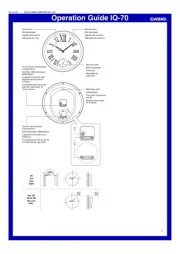
18 Juni 2025
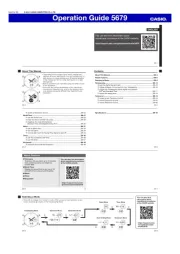
17 Juni 2025
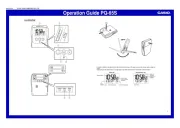
17 Juni 2025
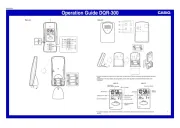
16 Juni 2025

16 Juni 2025
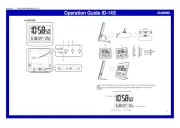
16 Juni 2025
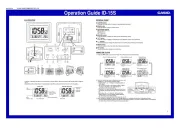
16 Juni 2025
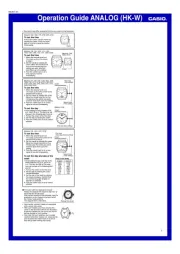
16 Juni 2025
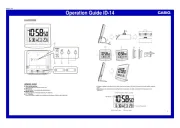
16 Juni 2025
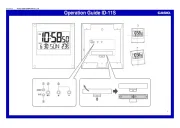
16 Juni 2025
Handleiding Horloge
- Lambretta
- PANERAI
- Ebel
- Audemars Piguet
- Timex
- Crivit
- Lorus
- Epson
- Armani
- ETT
- Hype
- Ronda
- Citizen
- Fromanteel
- Westfalia
Nieuwste handleidingen voor Horloge

5 Juli 2025

5 Juli 2025

4 Juli 2025

4 Juli 2025

4 Juli 2025

4 Juli 2025

4 Juli 2025

2 Juli 2025
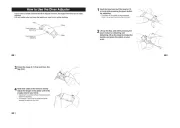
1 Juli 2025

21 Juni 2025